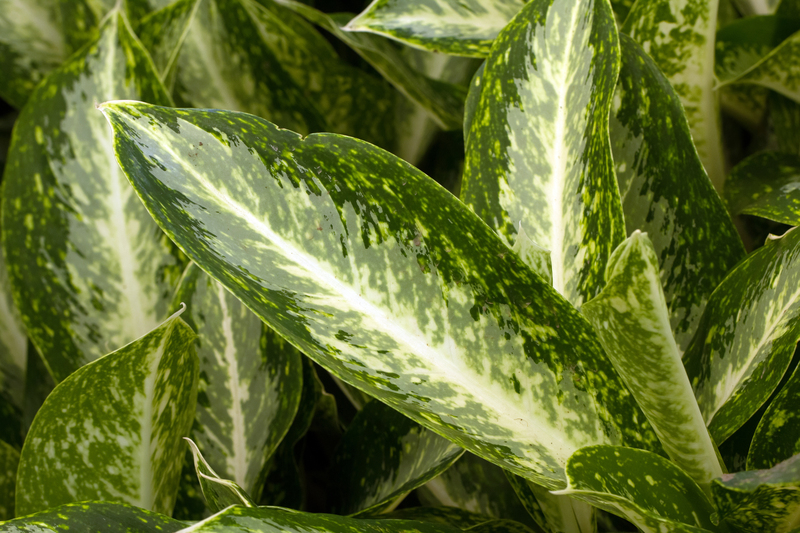Cultivating a Secure and Engaging Garden for Children
Posted on 08/09/2025
Cultivating a Secure and Engaging Garden for Children
Gardening is more than a pastime--it's an opportunity to nurture, stimulate, and educate. For families, creating a secure and engaging garden for children isn't just about growing plants, it's about planting the seeds of curiosity, responsibility, and creativity in young minds. In today's article, we'll explore how you can design a safe yet adventurous garden space for kids, focusing on garden safety for children, building interactive elements, and fostering a lifelong love for nature.

Why a Child-Friendly Garden Matters
Children are naturally drawn to the outdoors. A child-friendly garden serves as an open classroom where they can explore science, develop motor skills, and learn about environmental stewardship. A well-designed garden for kids can:
- Enhance physical health through active play
- Improve mental well-being and reduce stress
- Promote social skills via group activities
- Teach responsibility and patience through gardening tasks
- Strengthen their bond with nature and environmental awareness
Planning: Foundations of a Safe and Fun Children's Garden
1. Assessing Your Space With Safety in Mind
Before breaking ground, consider the layout and surroundings of your garden. The core principle is garden security for children. Key steps include:
- Fence the area: Install sturdy, child-proof fencing to keep children in and potential hazards out.
- Choose visible locations: Design play areas where adults can easily supervise the children.
- Avoid sharp edges and tripping hazards: Opt for soft or rounded landscaping materials, and keep paths clear.
- Secure water features: If you include ponds or fountains, use childproof covers or barriers.
2. Selecting Safe, Non-Toxic Plants
Ensure that all flowers, shrubs, and vegetables are non-toxic and safe for children. Even with gardening education, kids are curious and might taste plants. To minimize risks:
- Research and avoid poisonous varieties, such as foxglove, nightshade, and oleander.
- Label edible plants and teach children which are safe to touch or eat.
- Encourage planting herbs and vegetables to foster sensory experiences and learning.
3. Creating Clear Garden Zones
A thriving engaging garden for kids balances safety and exploration. Designate zones for:
- Active play: Areas for running, climbing, or using play equipment.
- Quiet reflection: Cozy nooks for reading or observing insects and birds.
- Gardening tasks: Raised beds or child-sized plots for planting and tending.
- Sensory exploration: Spaces with plants of varied textures, colors, and scents.
Essential Elements of a Secure Garden For Kids
1. Install Safe Pathways and Surfaces
Choose surfaces that prevent slips and falls, such as:
- Grass (natural shock-absorber, but keep it well-trimmed)
- Bark chips or mulch (soft, but check for splinters)
- Rubber mats or play tiles under climbing areas
Design paths that are:
- Wide enough for children and adults to walk side-by-side
- Well-lit for evening visibility
- Free from protruding roots or low obstacles
2. Safe Garden Tools and Storage
Equip your child with age-appropriate gardening tools. Smaller, lighter plastic or wood-handled tools reduce the risk of injuries. Always:
- Store sharp tools, fertilizers, and pesticides safely out of reach
- Lock sheds and keep keys away from children
- Educate children on tool use and garden safety rules
3. Water Safety Considerations
Water features can captivate children, but they require vigilant garden water safety for kids:
- Avoid deep ponds or install secure fencing around water
- Use shallow birdbaths or container water gardens for exploration
- Empty buckets and watering cans after use to avoid accidents
Engaging Activities and Interactive Learning Experiences
1. Sensory Planting
A sensory-rich garden stimulates sight, smell, touch, sound, and even taste. Consider planting:
- Lamb's ear (soft leaves)
- Lavender and mint (aromatic herbs)
- Sunflowers (visual impact and bird food)
- Cherry tomatoes or strawberries (for snacking)
- Ornamental grasses (rustling sounds in the breeze)
2. Wildlife-Friendly Features
Encourage a love for wildlife with simple features:
- Bug hotels constructed from recycled materials
- Birdhouses, feeders, and baths to attract local species
- Butterfly-friendly flower patches
- Logs and stones for observing beetles, worms, and frogs
These create continuous learning opportunities while fostering respect for living creatures and environmental stewardship.
3. Child-Sized Gardening Projects
Assigning age-appropriate gardening projects builds confidence and skills:
- Mini vegetable gardens: Assign each child a raised bed or container to care for
- Sunflower or pumpkin growing competitions
- DIY scarecrows and garden decorations
Inclusive projects allow kids to witness the impact of their efforts and develop responsibility.
4. Art and Creativity in the Garden
Blend nature with creative expression:
- Painted rocks for path markers or plant labels
- Homemade wind chimes from upcycled materials
- Fairy or dinosaur gardens built in terracotta saucers
These projects encourage imagination and give children a sense of ownership within the garden space.
Year-Round Engagement: Seasonal Activities For Young Gardeners
Spring
- Seed sowing indoors or outdoors
- Building bug hotels and bird feeders
- Watching bulbs and blossoms emerge
Summer
- Harvesting fruits and vegetables
- Watering and weeding (good for developing responsibility!)
- Outdoor storytelling or picnic sessions in garden nooks
Autumn
- Leaf collecting and nature crafts
- Planting spring-blooming bulbs
- Composting activities and soil exploration
Winter
- Planning next year's planting with catalogues
- Bird feeding and wildlife watching
- Decorating the garden with lights or handmade ornaments
Teaching Safety and Responsibility in the Garden
1. Garden Rules and Boundaries
It's vital to establish clear guidelines and boundaries from the start:
- Designate no-go areas (e.g., tool storage or compost bins)
- Discuss which plants are safe (and which are not)
- Model proper garden tool use
- Supervise young children, especially around water and equipment
Regular reminders and gentle supervision help children internalize these safety lessons while feeling confident in their exploration.
2. Encouraging Responsibility Through Daily Tasks
- Watering plants
- Picking ripe produce
- Weeding (with gloves, if needed)
- Sweeping paths
Assigning age-appropriate tasks not only teaches practical skills but also instills pride in maintaining their space.
Incorporating Sustainable Practices in Children's Gardens
1. Composting and Recycling
Introduce eco-friendly practices early by:
- Maintaining a compost bin for garden and kitchen waste
- Involving children in turning compost and observing decomposition
- Recycling containers for planting and crafts
2. Water Conservation
- Install rain barrels to collect water for irrigation
- Teach children to water at the roots and during cooler times
- Mulch gardens to reduce water evaporation
3. Native and Pollinator-Friendly Plants
Choose local plant species to support biodiversity and teach children about native habitats. Pollinator-friendly gardens help sustain butterflies, bees, and other beneficial insects.

Practical Design Tips for a Secure and Stimulating Garden Space
- Create visibility: Keep play areas within easy view of the house or main seating areas.
- Use durable, childproof materials: Select weather-resistant and non-toxic garden furniture and decorations.
- Shade and shelter: Plant trees or install pergolas for sun protection and rain cover.
- Easy-access raised beds: Build beds at a height suitable for small arms and hands.
- Keep pathways low maintenance: Gravel or stepping stones are practical, but soft surfaces are safer for young children.
Conclusion: Growing Memories and Future Gardeners
Cultivating a secure and engaging garden for children is a rewarding endeavor for families, educators, and communities alike. By blending garden safety for children with creative, hands-on activities and sustainable practices, you foster a haven that nurtures curiosity, learning, and healthy habits. Remember, the most important ingredient is your own enthusiasm--children learn by example, so get out into the garden, dig deep, and grow together!
With thoughtful planning, a balance of security and adventure, and a dash of creativity, your child-friendly garden will be a cherished space where young imaginations sprout and flourish--season after season.

